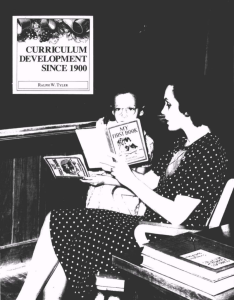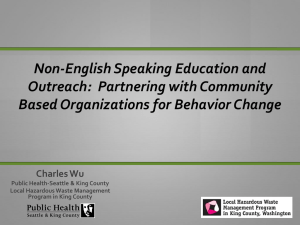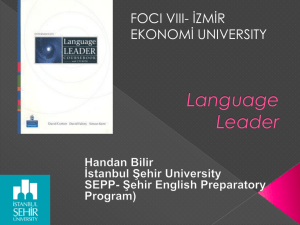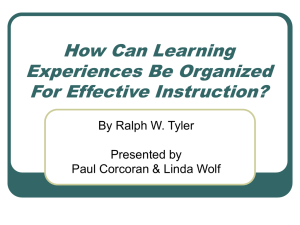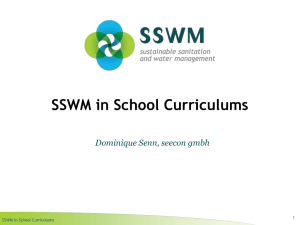Introduction to Curriculum Design
advertisement
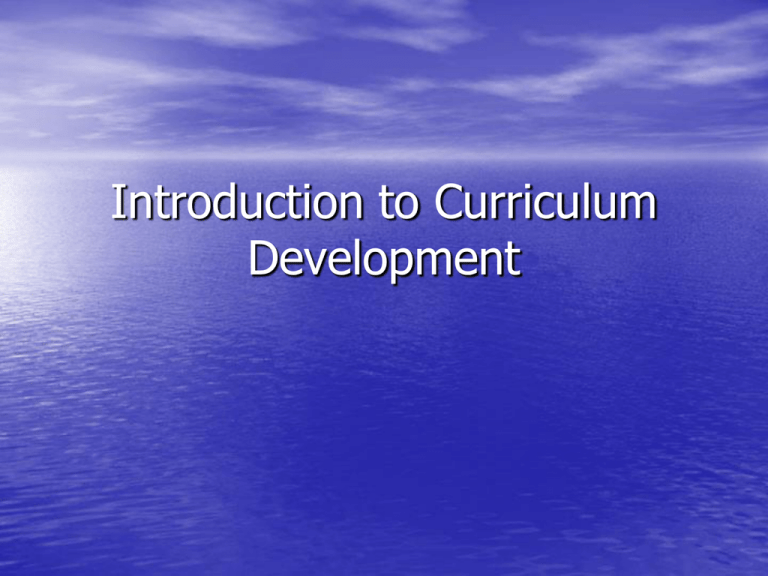
Introduction to Curriculum Development • Ultimately a curriculum is about planning instruction in order to maximize student learning thereby promoting lifetime physical activity. Why is a Curriculum Important? • There are many reasons but let’s discuss two quotes – Failure to plan is planning to fail – If You're Not Sure Where You're Going, You're Liable To End Up Someplace Else Who should be involved in the curriculum writing process? • PE teachers – The more the better because that increases buy-in. If your district has a physical education coordinator, he/she should also be present. • Students – Invaluable having student perspectives but this is not common • Depending on district – District curriculum coordinator (person who helps in the development of several curriculums) – Parents – Admin What is the Basis for a Curriculum • The standards provide a basis for what students should know and be able to do. – In most cases, when you are employed in a school district, the curriculum will have already been written and you will be updating it. – There are a litany of PE curriculums on the internet, some we will discuss in this course. They are valuable resources but as with anything on the internet, you must be a “discerning consumer.” When is a Curriculum Created? • Typically in the summer as part of a paid stipend. The amount varies by district, some do not offer monetary compensation. Organizing a Curriculum • K-12 with grade level sections – Each grade level (ES, MS, HS) creates a curriculum that may be combined into one overall curriculum – Generally the case with PE curriculums • K-12 without grade level sections – Not recommended because the content, instructional models, assessments, and organization of the content (units v. spiral curriculum) vary so much across the grade levels. These curriculums attempt to “do it all” but cannot be “all things to all people.” Organizing a Curriculum • The grade levels should periodically meet to align the curriculum. – Elementary PE should provide students with the adequate skills to succeed in MS. Likewise, MS PE should provide students with the necessary skills to succeed in HS PE. – The depth of elementary content should stop where MS begins and so on (a little overlap is OK). • A major complaint of students in PE is that they do the same thing year after year. If a curriculum is properly aligned, this will not happen. Organizing a Curriculum • Minimum Components (Rink, 2007) – – – – – – – – – Philosophy statement Specific program goals Sequence of performance indicators/objectives/outcomes Content framework Yearly block plan Placing the objectives into units Assessment meant to verify learning Resources References Examples from other Curriculums • Generally curriculums start with a mission and philosophy statement. However, the next several components vary, yet each method is systematic and organized. – See examples Our Curriculum • • • • • • • • • • Step Step Step Step Step Step Step Step Step Step 1 – contextual characteristics 2 – mission and philosophy statement 3 – instructional model 4 – goals and objectives 5 – organizational framework 6 – student assessment 7 – technology and equipment 8 – program and teacher evaluation 9 – extending PE 10 – resources Characteristics of a Good Curriculum • The document is user-friendly and has day-to-day • • • • application The content is specific enough to provide guidance for lesson and unit planning but not overly restrictive as to subvert teacher creativity and independence Content is aligned with the standards Progressive sequence that is developmentally appropriate over the years Assessment materials included that measure achievement of the goals and objectives Verbiage confusion? • You will find curriculums use several words to express similar concepts. For example: • Enduring understandings • Guiding questions • Benchmarks • Outcomes • Indicators (performance indicators) • Standard statements • Goals • Objectives • You must determine what level of specificity is being used. Brief Tangent Role Conflict?: PE Teacher & Coach Always remember, your primary responsibility is to students, all 100% of them, not just the athletes. Beware shortchanging PE for athletics. Doing so deprives students of the education they deserve and contributes to poor wellness as adults – something YOU are responsible for. There is NO EXCUSE for hurting students in this manner.

